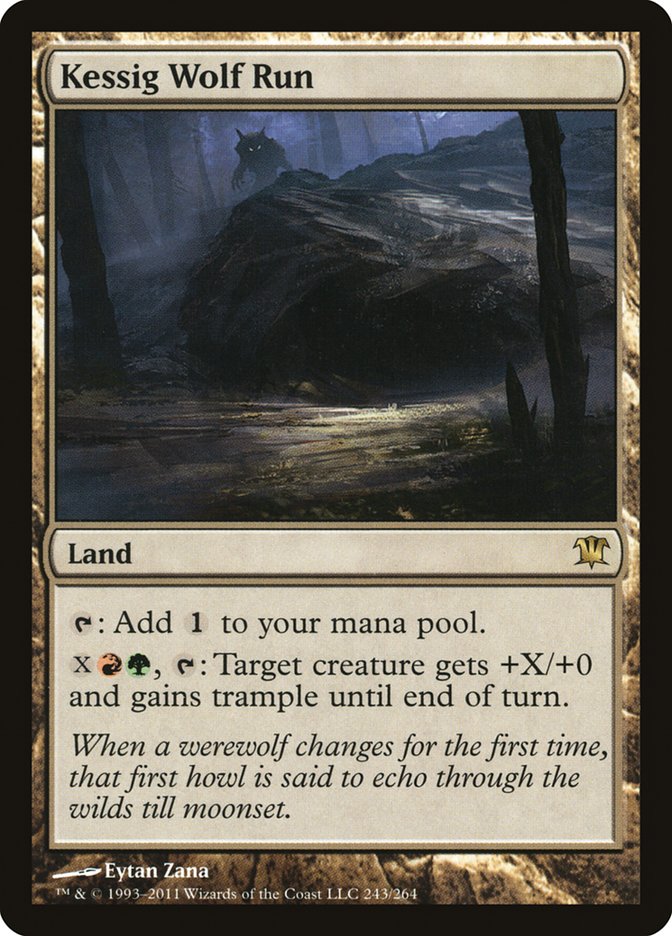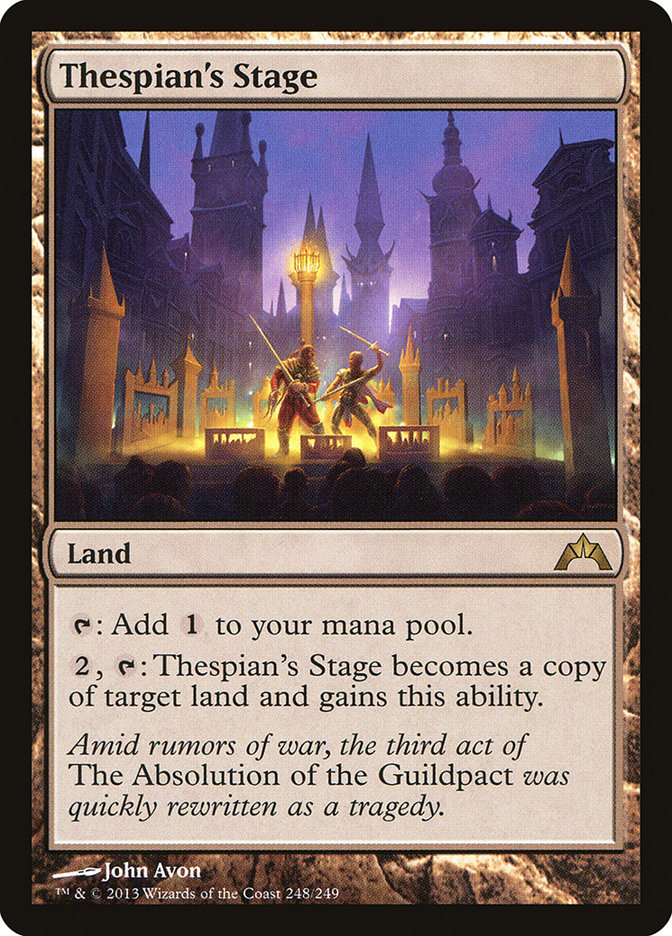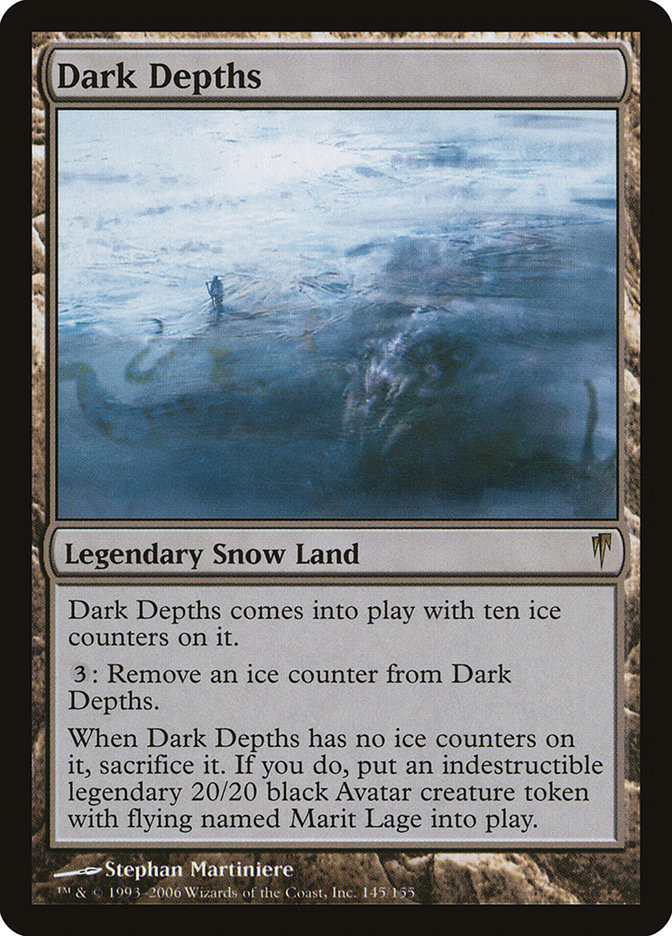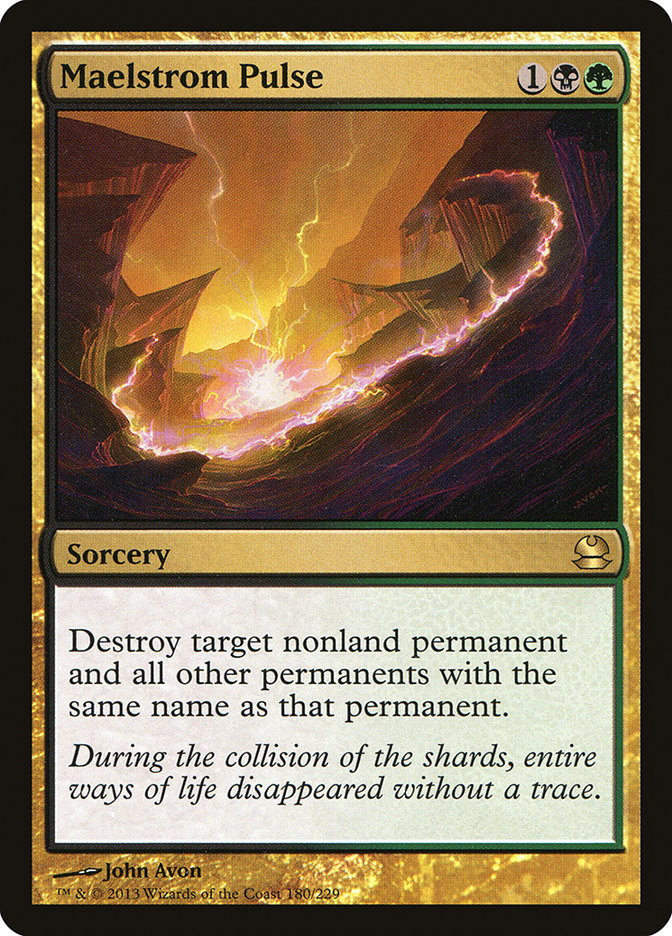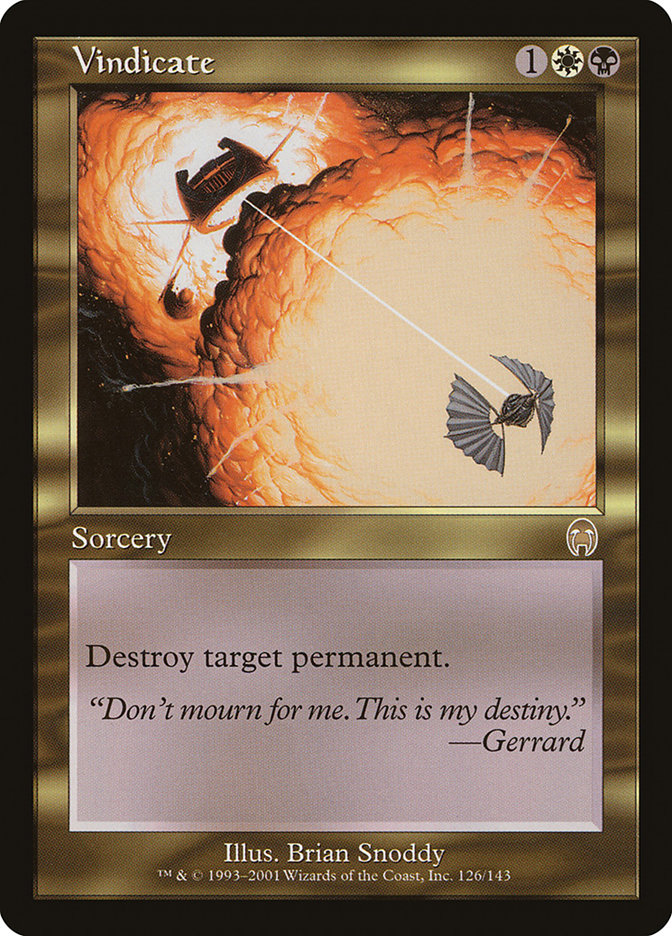This past weekend was a pretty awesome StarCityGames.com Invitational in New Jersey. Things didn’t quite go according to plan, as my likeness isn’t currently being painted on a Thopter Foundry token, but it was an absolute blast. If you didn’t show up, you missed out, and I fully expect you to be in attendance at the next one in Indianapolis in just a few short months!
For those of you who didn’t attend, I hope you tuned into the coverage from home. There were a lot of great games of Magic, and ultimately Jund Midrange ended up taking down the tournament.
Pretty disappointing, I know.
While I will berate Jund for just being a "good stuff deck," I know it has merit. It is full of very powerful cards that have the ability to win games on their own and efficient removal to deal with the variety of threats being thrown at them. I mean, even their lands can turn their Beast tokens and Scavenging Oozes into monsters.
The strongest asset Jund Midrange has going for it is that it is one of the best decks for getting to the late game. It has so many versatile spells and rough creatures that few decks can boast having a good matchup against it. In the hands of a skilled pilot, anything is possible. While you can argue that the best Jund players are the ones who topdeck Bonfire of the Damned, you can’t ignore that good players keep playing the deck and doing quite well with it. The same can be said for average players because of how high the power level is of each card.
The addition of Scavenging Ooze was quite the boon, giving them an absurd creature that sees regular play in Legacy. Combined with all the sweepers and spot removal, Scavenging Ooze can grow quite large in a hurry, gaining life along the way to avoid losing a race. It also gives you a great foil to Unburial Rites, which is traditionally tough for Jund to beat.
Olivia Voldaren singlehandedly invalidates many strategies, as one going unchecked is generally lights out for the opponent. She flies, grows to epic proportions, and can steal or kill virtually any creature you put down on the table. Given how mana-heavy Jund Midrange is, she can get out of hand in just a single turn.
Another one of Jund’s strengths is its great mana sinks. There really is no such thing as a Jund deck getting mana flooded because it will be able to use all of its mana almost every single turn given how many activated abilities and X spells are at its disposal. While it has few gigantic card advantage spells like Sphinx’s Revelation, the inherent card advantage gained through things like Huntmaster of the Fells and Thragtusk cannot be ignored. The virtual card advantage gained through something like Olivia Voldaren is also quite powerful.
While Erik Smith took down the event, our very own Gerry Thompson made it to the elimination rounds once again, making for an exciting back-to-back sweat. Of course, he opted to play the same two decks for Standard and Legacy that he had played in the two previous Invitationals, U/W/R Flash and Shardless BUG. Like Gerry, I am an advocate of sticking with what you know and tuning it to beat whatever decks are giving you problems. He has a lot of great ideas, and those ideas translate well at these types of events. Neither Standard nor Legacy has been shaken up too much as of late, and both decks seem relatively well positioned.
In our last [author name="Above The Curve"]Above The Curve[/author], we argued about whether Shardless BUG or Esper Deathblade is a better choice for Legacy. I stuck to my guns and played Esper Deathblade in the Invitational but couldn’t help knowing that Gerry was right, and I’ll explain exactly why.
For those of you who don’t play a lot of Legacy, hopefully you’ll still be able to read this and come away feeling like you learned something. For those of you who do play a lot of Legacy, it is my goal to put into words exactly how the new legend/planeswalker rule changed the game. The change to the rules is simple enough:
Each player is allowed to control exactly one copy of a legend or planeswalker, but putting a second copy into play (or planeswalker with the same name) will force you to choose which copy you want to keep.
There are a few interesting changes to the rules that allow for this ability to be used for something pretty sweet.
Before the change, state-based actions checked the uniqueness rule before any abilities were put on the stack. This meant copying a Dark Depths simply put both of them into the graveyard and the game never "saw" a Thespian’s Stage as a Dark Depths with zero counters on it. It simply hit the graveyard before that ability could be checked.
Now, you can choose to keep the Thespian’s Stage around, sacrificing the original Dark Depths. The Thespian’s Stage will now be a Dark Depths with zero counters and result in Marit Lage coming into play.
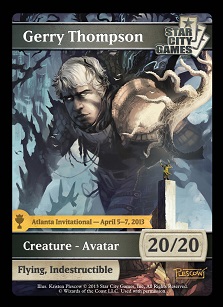
The previous uniqueness rule just felt clean. You aren’t really supposed to be able to have Jace battle himself. After all, there is only supposed to be one of him. We aren’t really fighting in different dimensions. If the argument here is "then why did they die?" I don’t really have an answer for you. To me, playing a copy or clone meant you were trying to break time and/or space, which resulted in the death of whatever legendary permanent was in play. It felt right.
I’ve played with the really old legendary rule too, and I hated it. The Rebels mirror aka who gets to Lin Sivvi, Defiant Hero first was one of the most frustrating mirror matches of all time and the least skill-intensive format I’ve ever witnessed. With the old rules, only the new copy of the legend died, which might have made more sense in terms of flavor but translated poorly to gameplay. With the new rule, I think it just feels like a reversion.
For the first time in Magic’s history, two legendary-esque permanents are allowed to be in play at the same time, and the change just feels . . . strange. I assume that something out of Theros (potentially the "God" cards) will justify the rules change, but altering the rules of the game in order to make new cards work can be dangerous to the integrity of existing structures such as Legacy. New rules are always hard to swallow at first and I understand that "change" and "bad" aren’t synonymous, but I’m always going to be skeptical until I see a justifiable reason behind the change.
But back to the point at hand; Legacy has changed dramatically as a result of the rules change. One card in particular got quite the upgrade as long as you build your deck with the change in mind:
One of the best blue cards ever printed, Jace, the Mind Sculptor has been the cause of many headaches and is one of the most difficult planeswalkers to kill. The fact that his card-advantage ability does not expend loyalty counters means that there is very little downside to just using it to Brainstorm every turn for the rest of eternity.
In the past, many control decks used Jace as a two-front weapon. It was a source of card advantage and a potential win condition, but it was also the best answer for an opposing Jace and meant you didn’t really have to invest much time or effort to beat it. If someone else was playing Jace, that was just fine. You could possibly dig yourself out of the jam by finding a Jace of your own and ending the shenanigans.
But now the uniqueness rule has changed it so that both players can control Jace, which is very bad for any deck that relied on Jace as an answer to opposing Jaces. This list of decks includes Esper Deathblade and a few others but not Shardless BUG. Deathblade has very few creatures that can actively pressure an opposing Jace effectively and very few answers to an opposing Jace outside of a Vindicate or two.
What this means is that Shardless BUG is the best Jace deck because it’s able to actively attack an opposing Jace with some regularity. When your creatures have to do all the dirty work in a planeswalker battle, it puts a lot more pressure on them to accomplish a task that was once fairly easy.
Shardless BUG was a reasonable deck to begin with and arguably benefited the most from the most recent rules change. It can use the card advantage gained from Jace, Ancestral Vision, and Shardless Agent much more aggressively than something like Esper Deathblade and ultimately puts the onus on the opponent to have all the answers while they deploy threat after threat. And since Shardless BUG can use most of the same disruptive elements that Esper Deathblade uses, the argument boils down to a limited number of categories.
The Fatties (Will Work for Food)
 |
vs. |
 |
While both decks play Deathrite Shaman, it’s important to note how much more easily all its abilities are to utilize in the BUG deck. Green mana is occasionally difficult to come by in Esper Deathblade because of how certain games play out and which lands you need to search for via fetchlands. Bayou turns on all of the abilities from Deathrite Shaman, but Bayou also interacts poorly with the rest of the lands in Esper Deathblade to cast both Abrupt Decay and Geist of Saint Traft while still being able to play the rest of your spells with ease. For example, Underground Sea and Savannah cast everything in your deck, as is the case with Tropical Island and Scrubland[/author]“][author name="Scrubland"]Scrubland[/author]. Bayou doesn’t really help in this scenario.
 |
vs. |
 |
This is quite possibly the biggest tension between the two decks. While some people have advocated the regular use of Tarmogoyf in Esper Deathblade, I feel like that ultimately puts too much strain on the color requirements. Abrupt Decay is absurd, but just playing two or three of them can put you in a tight spot when your opponent draws a Wasteland or just kills your Deathrite Shaman.
Stoneforge Mystic is a powerful creature that gains you a small amount of card advantage even if it dies. What it doesn’t do is block too well or survive a Lightning Bolt or Punishing Fire. The latter is probably the biggest advantage that Tarmogoyf has over Stoneforge Mystic, as both are played regularly in the Legacy format. This means that more often than not Stoneforge Mystic is a glorified Elvish Visionary that draws out one of the opponent’s limited removal spells. The original goal of the deck was to have all creatures that are "must kills." Deathrite Shaman often takes a Lightning Bolt so that your "better" creatures can take control of the game. Overloading the removal from the opponent is a valid strategy.
The biggest mistake I made with the deck was moving away from Dark Confidant so that I could play Geist of Saint Traft instead. While Geist of Saint Traft isn’t a bad card and I’ve regularly advocated that he be elected President, I don’t think he really fits in the maindeck of such a well-oiled machine. I appreciate his uses out of the sideboard, but he just isn’t good against a deck full of so many brick walls. You want one or two of your creatures to survive the long haul so that they can eventually close the game through a Batterskull or card advantage.
I think the biggest argument for Tarmogoyf over Stoneforge Mystic is that I lost to a lone Nimble Mongoose in a match against RUG Delver. I sat there playing Geist of Saint Trafts and a host of other rare creatures with multiple removal spells in hand, only to have my creatures match up poorly or get obliterated by Lightning Bolt after a double block. Tarmogoyf can singlehandedly fix this kind of a situation, giving you a creature that is fantastic at both attacking and blocking, which is not something that happens a lot in Legacy. While he is just a creature with power and toughness, aka no abilities, there’s a reason he’s worth over $100.
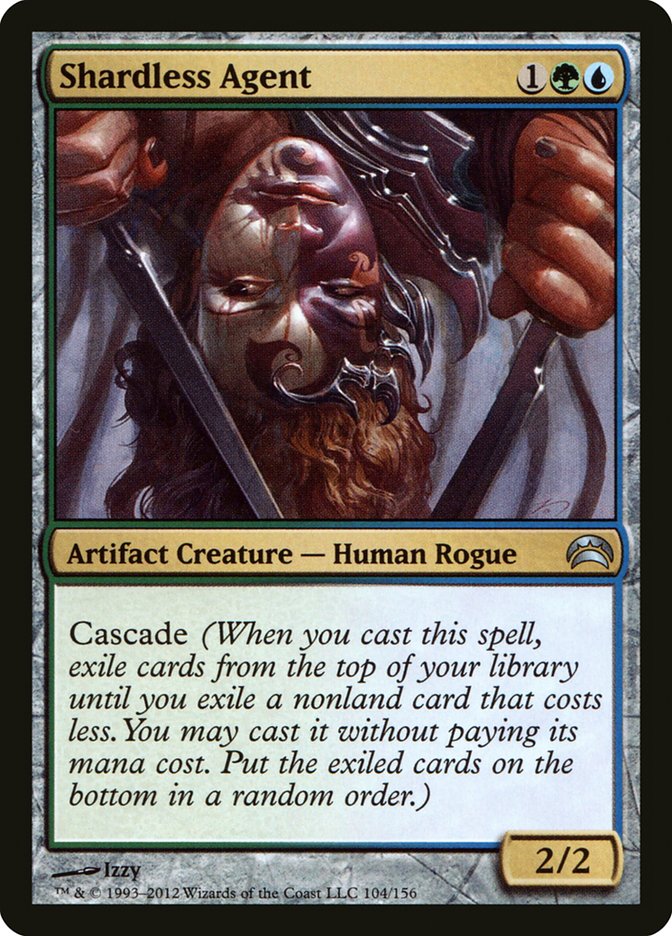 |
vs. |
 |
The similarities here are pretty obvious. Two power for a fairly small investment followed by some card advantage. The biggest difference is that one of these cards gives you an immediate impact on the board regardless of whether or not your opponent has a removal spell. The philosophy behind both of these cards is wildly different.
Dark Confidant is a fantastic card in his own right and costs a full mana less in a format where gaining control of the tempo is everything. If he’s left alone, he will fuel a very dangerous fire, but those times are few and far between, which is a very powerful argument for Shardless Agent being a better creature. The fact that Brainstorm also allows you to set up some ridiculous turns is quite good.
The biggest difference between Shardless BUG and Esper Deathblade is that Shardless BUG wants to gain incremental card advantage throughout the game with value creatures and efficient spells. This is almost the opposite of Esper Deathblade, as most of their threats will just end games if their opponent doesn’t have the answer. In some ways, this can be viewed as being a more aggressive strategy even though it’s consistently classified as a control deck. It’s like the difference in playing Caw-Blade (tempo-control) and Super Friends (planeswalker control).
Verdict: Shardless BUG
The Support Group (Insert Joke About Something Depressing)
Both decks have access to all the discard and Force of Wills they want, but Shardless Agent puts a bit of a strain on deckbuilding. The cascade mechanic keeps you from playing defensive counterspells that cost less than three mana. This means no Daze, Spell Pierce, Flusterstorm, etc. The counter to this argument is that Esper Deathblade can play these cards, but they rarely do! Thoughtseize and Force of Will are just superior options at the moment, and it just so happens that Shardless Agent works decently with both.
Abrupt Decay can also be played in both decks, so the comparison is mainly to show you how the two butt heads.
Swords to Plowshares is one of the biggest selling points for me on Esper Deathblade. There are so many times where a one-mana removal spell is necessary for gaining control of a cluttered board, and burning an Abrupt Decay usually results in spending your entire turn. The combination of Swords to Plowshares alongside Deathrite Shaman and a slew of two-drop creatures is gigantic, where being able to deal with their threat and still deploy your own can be invaluable.
From the other side, Baleful Strix is one of the cards I wanted to talk about most since it is such a powerful card that doesn’t actually seem that powerful. While it isn’t exactly a removal spell, it’s deathtouch ability shuts down so many creatures in their tracks while drawing you a card! The fact that it’s blue for Force of Will, flies, and has the ability to attack ranks it highly in my book.
Maelstrom Pulse and Vindicate are pretty similar in what they’re trying to do, but both have their upsides and downsides. For one, Maelstrom Pulse is not a good answer to an opposing Jace when you have your own in play, but that usually isn’t a problem for BUG due to the more threatening creature base. Maelstrom Pulse can gain small amounts of value by killing multiples of the same threat, but that doesn’t happen nearly as much as you’d think. But Vindicate can kill lands, which is very important in some games where you’re trying to punish them with Wasteland, and is an effective answer for Jace at any point in the game.
Verdict: Esper Deathblade
Final Answer: Who Sharded?
My pick at this juncture is Shardless BUG. While the support cards are probably better for Esper Deathblade, the real power of this type of strategy comes from the creatures. The overall power level of the creatures in Esper Deathblade are probably higher in a vacuum, but there are so many factors to equate when making this kind of comparison. One of those factors is instant advantage versus long term, and Shardless Agent gives you so much breathing room on the spot. Tarmogoyf can protect your planeswalker, life total, or just kill the opponent, all while dodging some of the most-played removal in the format.
If I’m feeling a little frisky, I might try splashing Swords to Plowshares in Shardless BUG, but we’ll cross that road if we come to it. Cards like Hymn to Tourach can be an undeniable strain on your mana and keep you from experimenting with bigger changes. I think the real lesson here is that it isn’t impossible to play four colors in your control deck; the only question is whether or not the splash is good enough. If you think Abrupt Decay is enough removal, then probably not.
Deathrite Shaman and access to insane mana fixing lets you get a little weird.
The next Invitational isn’t too far away, and I’m sure there will be some StarCityGames.com Legacy Opens in the near future for me to attend. It’s a little depressing to give up on something you’ve done so well with over the last few months, but when you’re beat, you’re beat. You gotta know when to lay it down.
*sigh*
I guess Gerry was right (as usual).
Todd Anderson
strong sad on Magic Online
@strong_sad on Twitter

